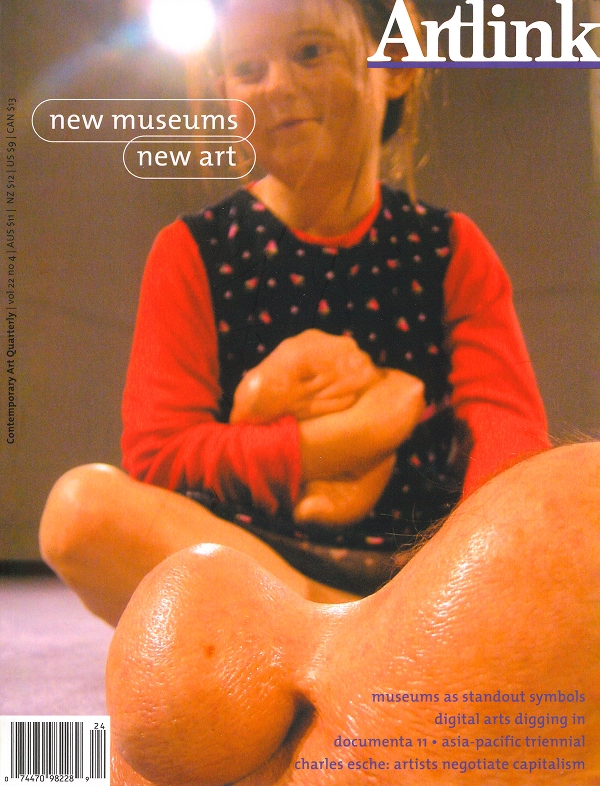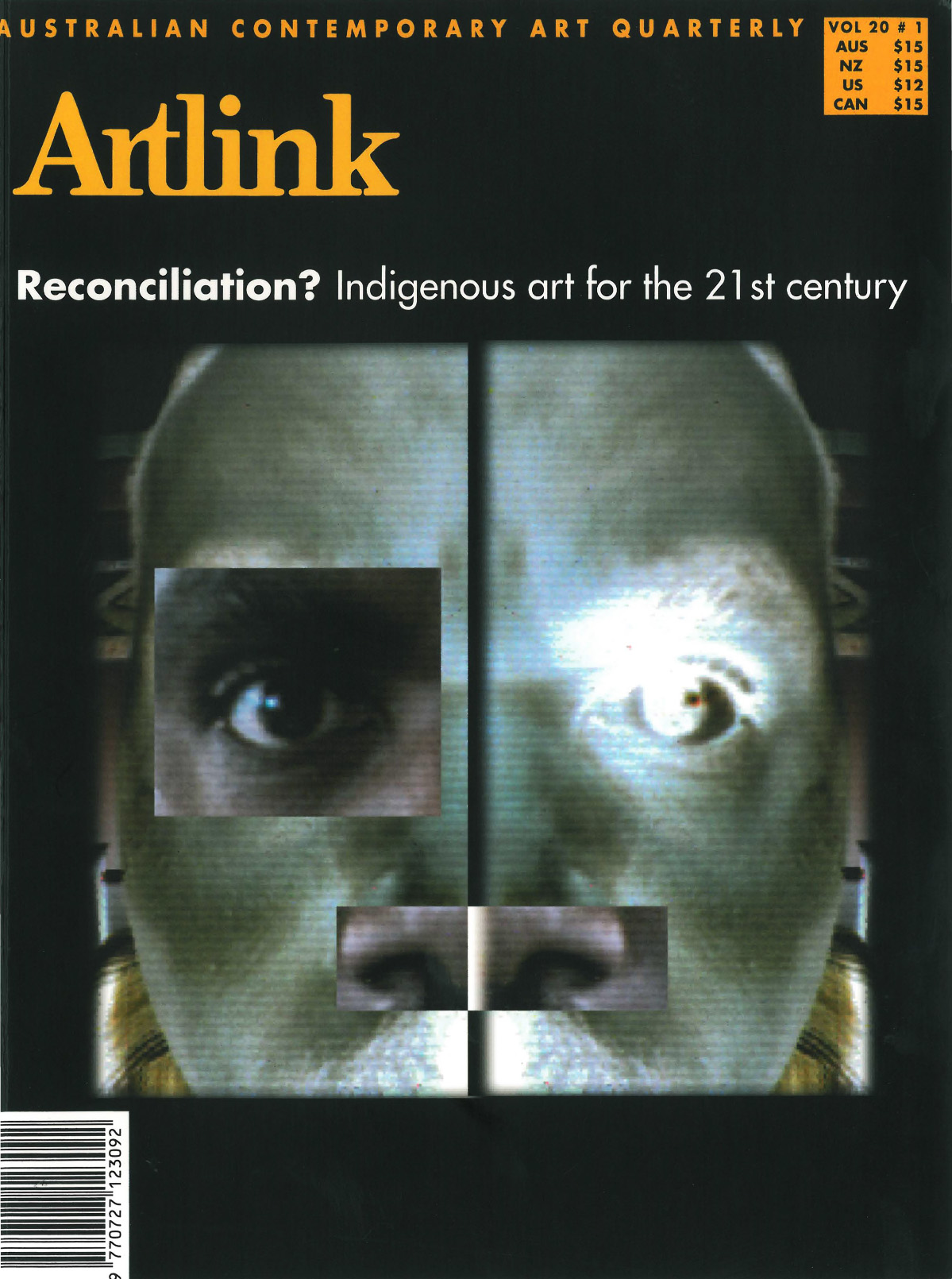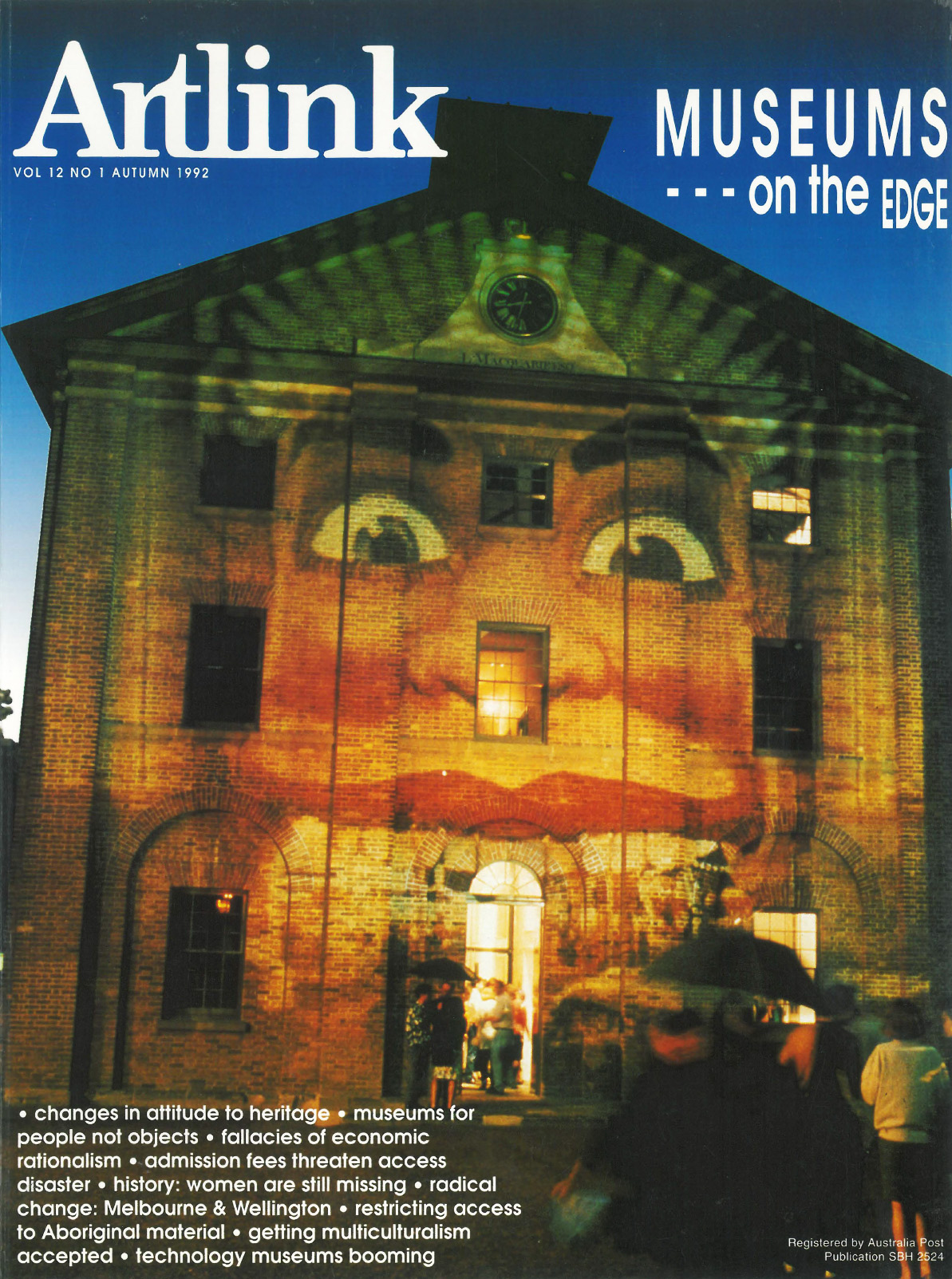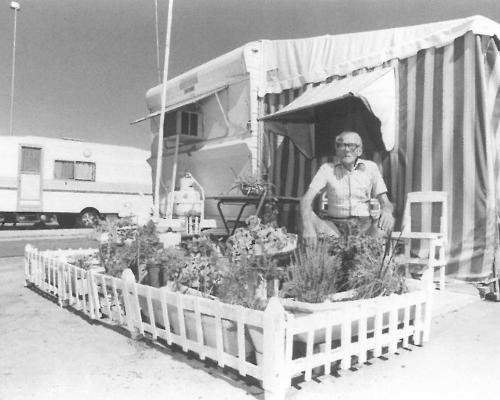Search
You searched for contributors, issues and articles tagged with Museums ...
Contributors
Issues



Articles

This text takes up some of the broader concerns of Tony Bond's initial questions to an Australian panel at ARCO 2002 Madrid, particularly 'can there be a benign global capitalism?' and 'how do we address the value of exchanges between artists?'.






















































The magnificent donations made to museums, galleries and libraries in the last 12 months were made possible by the Commonwealth's Cultural Gifts Program, an initiative that encourages Australian patronageof the arts by offering attractive tax incentives to donors. Wallace here presents a short expression of appreciation.




